Navy Wounded Warrior has provided assistance to over 7,600 seriously wounded, ill and injured service members located throughout the country.
2022 Adaptive Sports
2022 Team Navy Road to the Warrior Games
Stay connected with Team Navy on Facebook and Instagram, and join us in cheering for the team at the 2022 Warrior Games!


Thank you to the 2022 Team Navy presenting sponsor Semper Fi & America's Fund and supporting sponsor Deloitte for their generous support. No Navy endorsement implied.
 |
The 2022 Department of Defense Warrior Games will be hosted at Disney's ESPN Wide World of Sports Complex in Orlando, Florida from August 16-29. The wounded warrior athletes will represent the Army, Marine Corps, Navy and Coast Guard, Air Force and Special Operations Command.
The DoD Warrior Games were established in 2010 as a way to enhance the recovery and rehabilitation of wounded warriors and to expose them to adaptive sports.
 |
Navy Wounded Warrior will host the 2022 Navy Team Trials May 15-27, 2022 at NAS North Island, California. Athletes, including active duty and veteran Sailors and Coast Guardsmen, from across the country competed for a place on Team Navy 2022. The competitors went head-to-head in archery, cycling, field, golf, indoor rowing, powerlifting, shooting (precision air sports), sitting volleyball, swimming, track, wheelchair basketball and wheelchair rugby.
The Trials are part of the adaptive sports and recreation program designed to promote the mental and physica well-being of the wounded, ill and injured service members who participate.
The Paralympic-style competitive event showcases the resiliency of wounded warriors and highlights the effectiveness of adaptive sports as part of their recovery. It also highlights the impact the Navy Wounded Warrior program has in helping with the restorative care of wounded warriors enrolled in the program.
The Trials are also a test of the athletes’ resiliency, overall strength and endurance. For many, participation represents another milestone along their path to recovery, and an opportunity to meet other wounded warriors who face similar challenges.
 |
Teams include active-duty service members and veterans with upper-body, lower-body, and spinal cord injuries, traumatic brain injuries, visual impairment, serious illnesses and post-traumatic stress. The Paralympic-style competitive event will feature 12 sports: archery, cycling, field, golf, indoor rowing, powerlifting, shooting (precision air sports), sitting volleyball, swimming, track, wheelchair basketball and wheelchair rugby.
 |
Archery
Whether athletes are practicing at home or competing during the DoD Warrior Games, attention and focus are the keys to success. From the types of bows used in competition to the sport’s origin, click here to learn more about the sport.
Cycling
With cycling, your body is your engine, so it’s important to take care of it, especially off the bike. Fueling your body well, while eating a well-rounded nutritional diet and not burdening it with excess calories from junk food, is one of the key components to success in the sport. Click here to learn more about the sport.
Field
Field is comprised of two events: discus and shot put. Discus and shot put are two of the oldest field events in the sport of track and field. Both depend on explosive strength. However, it’s not just muscle power that helps athletes dominate in this sport. Shot putters and discus throwers also need quickness to generate momentum. From the explaining the term athletics to the Paralympic Games history, click here to learn more about the sport.
Golf
Did you know? As of 2019, approximately 24.3 million people played golf in the US, and a total of over 107 million people played, watched or read about golf. From an overview of golf’s origins to your chances of getting a hole-in-one, click here to learn more about the sport.
Indoor Rowing
Rowing machines use up to 86% of your muscles, according to the National Institute of Health. This, in turn, helps increase endurance, strengthens, and tones muscles. Rowing also provides benefits to your heart and lungs. Although, it’s typically considered low-impact for the average user, rowing burns serious calories without putting the added stress on your joints. It allows you to control the movement and pace. From an overview of indoor rowing’s origins to competition style, click here to learn more about the sport.
Powerlifting
Powerlifting is one of the Paralympic Movement’s fastest growing sports in terms of participation. Although weightlifting made its Paralympic debut at Tokyo 1964, it was not until the 1984 Games that powerlifting was first included as a Paralympic sport. From the sport’s Paralympic Games history to explaining the difference between weightlifting and powerlifting, click here to learn more about the sport.
Shooting
Shooting is the ultimate test of accuracy and control. In this precision sport, athletes use focus and controlled breathing to reduce their heart hearts and improve stability and high performance. This ability to steady hand and mind to deliver a sequence of shots requires well-developed powers of concentration and emotional control. This sport is all about coordination, balance, control and precision. From the sport’s Paralympic Games history to explaining the competition style, click here to learn more about the sport.
Sitting Volleyball
Sitting volleyball is a fast and exciting spectator sport, demanding excellent reactions, great upper body strength, stamina, balance, and tactical awareness. From the sport’s origin to explaining why one team member wears a different color jersey, click here to learn more about the sport.
Swimming
Swimming was one of the original Paralympic sports and has grown into the second-most popular in terms of TV viewers. The Paralympic pool measures the same length as the Olympic pool, at 50m in length and 25m wide. From the explaining the difference between road and track cycling to the sport’s origin, click here to learn more about the sport.
ABOUT ADAPTIVE ATHLETICS
Fitness and teamwork are a way of life in the military. Serious illness or injury can profoundly impact that way of life, often confining a service member to a hospital bed and significantly altering their physical capabilities.
Adaptive athletics are sports that have been modified to meet the abilities of injured or ill individuals. They help wounded warriors build strength and endurance, while also drawing inspiration from their teammates.
All wounded warriors enrolled in Navy Wounded Warrior are encouraged to include adaptive athletics in their recovery plans to build strength and endurance. Sports also helps build self-esteem, lowers stress levels and prevents secondary medical conditions from developing.
Warrior Games
The Warrior Games are a Paralympic-style competition among more than 200 wounded, ill and injured service members from all branches of the U.S. military, as well as from international armed forces. The invitation-only event includes competitions in archery, cycling, seated volleyball, shooting, swimming, track and field, and wheelchair basketball. The wounded warrior athletes have upper-body, lower-body and spinal cord injuries, traumatic brain injuries, visual impairments, serious illnesses, and/or post-traumatic stress.
The Warrior Games are presented by the Department of Defense and hosted by individual services on an annual rotational schedule.
The goal of the Warrior Games isn't to identify the most skilled athletes, but rather to demonstrate the incredible potential of wounded warriors through competitive sports.
Getting Involved
Connect with the Navy Wounded Warrior adaptive sports coordinator via the call center at 855-NAVY WWP/855-628-9997 or via email at navywoundedwarrior.fct@navy.mil to determine which activities are right for you. Navy Wounded Warrior hosts a series of adaptive athletic reconditioning camps at naval bases throughout the country that focus on strength training, nutrition and a variety of sports. Active-duty athletes of all ability levels are welcome, with limited space for veterans. The program also involves enrollees in camps hosted by partner organizations and international competitions, such as the Invictus Games.
Numquam Navigare Solus – Never to Sail Alone
Sailors and Coast Guardsmen may self-refer to Navy Wounded Warrior, or be referred by a family member, their command leadership or their medical team. Contact the Navy Wounded Warrior call center at 855-NAVY WWP / 855-628-9997, or email navywoundedwarrior.fct@navy.mil.

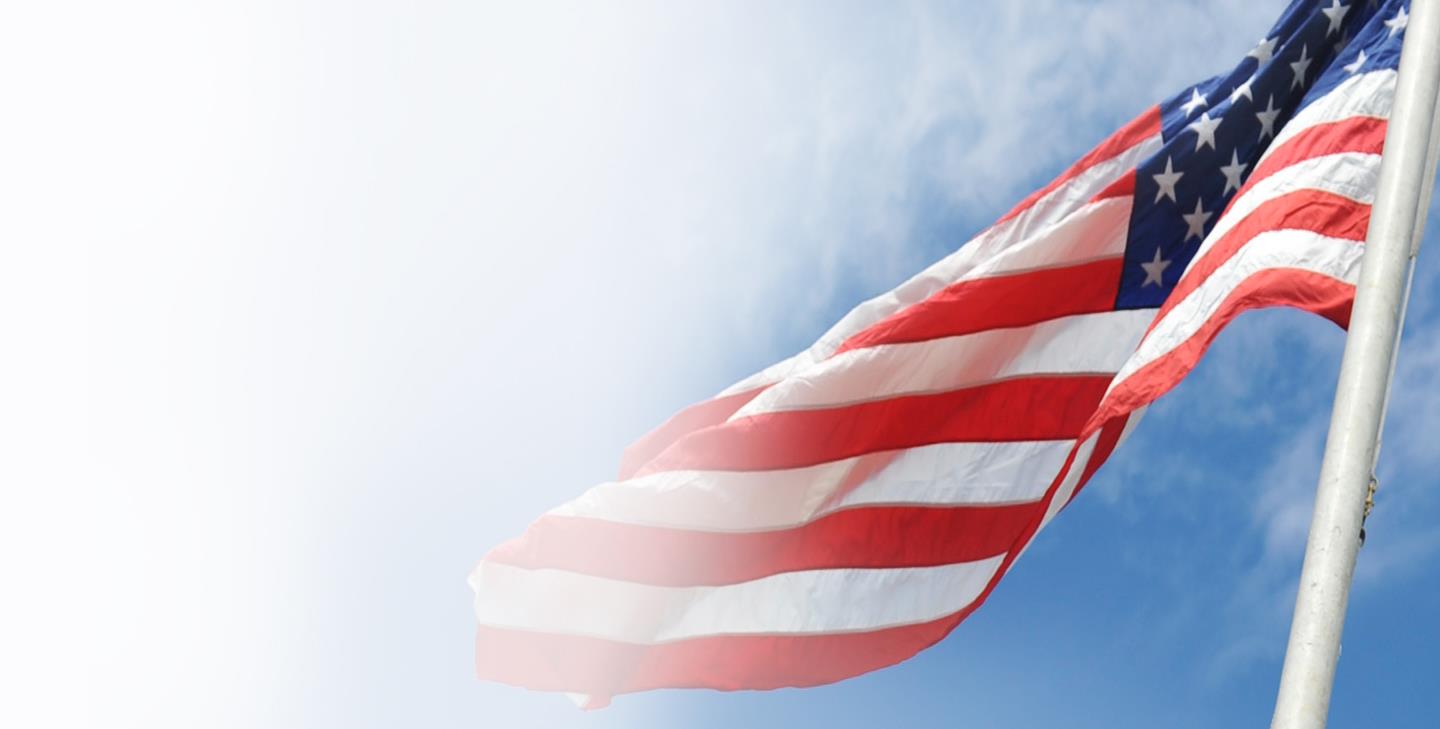
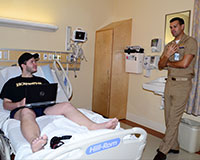 Enrollment
Enrollment
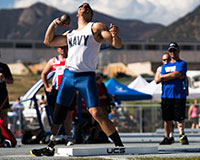 Recovery
Recovery
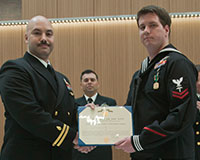 Transition
Transition
 Families
Families
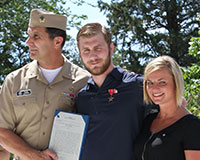 Leadership
Leadership
